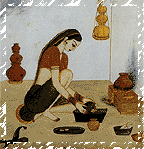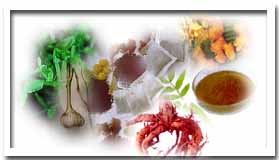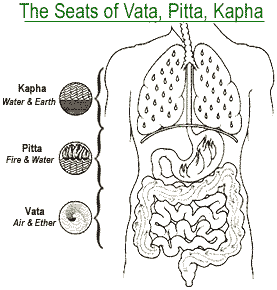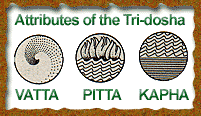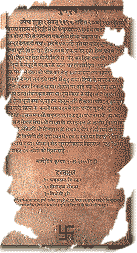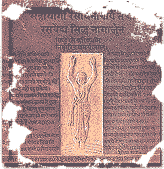Cooking HygienePractice hygiene during cooking to prevent food contamination, food poisoning and transmission of disease.
Tip for WomenWomen, during menstruation should use clean, soft cloth or sanitary napkins. Change the napkins atleast twice a day.
Teeth CareCoal powder, salt, rough tooth powder, etc when used for brushing lead to scratches in the outer layer of the teeth.
Ear TipWax get formed in ears and block the air way. This causes pain. Hence clean the ears once a week with cotton buds.
AsthmaBabies exposed to tobacco smoke are more likely to get asthma. If a woman is exposed to tobacco smoke during pregnancy, her baby may also be more likely to get asthma.
Tip for PimplesIf you tend to get pimples, make it a habit to drink the water of a fresh coconut every day.
Foot CareDon’t wear socks for over 7 hrs at a stretch, to avoid infections.
Stomach CrampStay away from cola & caffeine, to avoid stomach cramp and opt for herbal tea.
DigestionDrink hot water regularly to enhance digestive power.
Sore ThroatThe best thing to gargle is use distilled warm water with a teaspoon of salt. Honey can be also used as a gargling liquid to get rid of the mucus stuck in your throat.
Skin CareCleaning is a major part as it rids your skin of the old cells. Use a good moisturizer for skin. The number one reason behind wrinkles is sun, avoid sunlight or use sunscreen lotion.
Wrinkles Below EyesThere are no oil glands located around the eyes. So we get wrinkles below eyes.Start applying a good moisturizer in the eye area at an early age to avoid these wrinkles.
Teeth CareSoft and sticky foods should be avoided because they attach and get between the teeth providing a favourable place for bacteria to grow.
Sleeping Tip for Pregnant WomanSleep on your left side. This allows for the best blood flow to the fetus, your uterus and kidneys. It also improves circulation of blood back to the heart.
Yoga TipYou must empty your bowels and bladder, clean your nostrils and throat of all mucus, consume a glass of lukewarm water and then begin the exercises after 15 minutes.
Remedies for SnoringChange your sleep position. Lose 10% of your body weight to help stop snoring. Avoid alcohol and sedatives to stop snoring.
Tip for Diabetic Patients Skip the barefoot look. Always wear shoes or slippers. Wear thicker socks to pad your feet.
Eye CareNever use Hot Water to Wash your Eyes. Close your Eyes and Sprinkle Cold Water on your Lids.
Yoga BenefitsRegular Practice of Asanas, Pranayam and Yoga Nidra Help Prevent Disorders and Ailments such as Diabetes, Blood Pressure, Heart Conditions, Asthma, Varicose Veins, Digestive Disorders, Arthritis.
Kidney StonesDrink Lots of Water and Other Fluids, at Least Two Litres a Day, to Avoid Kidney Stones.
Floss GumsFloss gums daily as gum disease can trigger heart disease & stroke.
SleepSleep More! Sleep will Speed up your Metabolism and Burn Calories.
TeaTea, Rich in Antioxidants, Fights against Cardiovascular Disease.
Sugar SubstitutesSugar Substitutes are generally compounds made up of simple forms of proteins. Since it is not a sugar it is used as a sweetener by people with diabetes and is also safe during pregnancy.
Preventing Heart DiseaseEat Healthy Diet, control diabetes and blood pressure, avoid smoking. Maintain appropriate cholesterol levels.
Excessive Facial HairApply a Mixture of Besan and Haldi (turmeric) with a little water, to face. When it dries, gently rub off. This will remove excessive Facial Hair.
Blackheads and WhiteheadsBlackheads and Whiteheads are caused when pores get blocked by oils, dirt etc. The only way to tackle this is by ensuring your face is clean. Wash your face regularly with a face wash suitable to your skin type.
SleepPeople who Sleep Less than 8 hour a Day increase the obesity risk. So Sleep Enough which will reduce the Excessive Appetite.
Dry Foot SkinTo Avoid Dry Foot Skin, Try to always use the Foot Cream after Bathing when your Skin is Moist.
Washing MouthMix Equal Parts of Salt and Baking Soda as a Mouth Wash that Sweetens the Breath.
Hair care Cover your hair with a scarf or shawl during travel to prevent tangles and to protect your hair from dust.
Diarrhea CureEat boiled sweet potatoes seasoned with salt and pepper before bedtime to cure chronic diarrhea.
Teeth careMassage your gums with your finger tip to improve blood circulation.
Cough ControlDrink hot tea to break up the mucus and open and moisten the airways. Avoid foods that increase the production of mucus, such as dairy products, meat and fried foods.
Bedwetting preventionEmpty the bladder before bedtime. Encourage your child to get up during the night. Limit fluid before bedtime.
Weight loss tipDrink only water – no teas, coffees, coca cola, juices etc. Water has zero calories and will help you to lose weight.
Tip for DiabeticsIf you’re a diabetic, regular visits to your eye care professional are a must to prevent problems that could lead to blindness.
Caffeine and AsthmaIf you feel an asthma attack coming on and don’t have your inhaler handy, try a couple cups of coffee, tea, hot chocolate, or chocolate bars. The caffeine will help open your airways.
Pregnancy tipDon’t drink more than 2 cups of coffee. Your baby may be at risk of birth defects as caffeine is a drug.
Avoid EyestrainFull-time computer users should take a 10 minute break every hour.
Black spotsMake a paste of saffron and add some honey, apply it on the face to remove black spots.
CucumberCucumber is a natural cleanser. Mix cucumber juice with milk and use it instead of a cleanser.
SunburnsPeel and grate a cucumber. Squeeze the juice to this, mix half–a–teaspoon glycerin and half–a–teaspoon rose water. Apply this on sunburns, leave it for some time.
Tan removalA facemask of egg white and honey gently removes the tan from your face.
HennaTreatments with conditioners helps to correct the effects of poor hair care. Henna is a good conditioner. Treatment with henna is good for the hair.
HeadacheDon’t be lethargic! Drink more water to avoid headache & tiredness.
CurdCurd is a good hair conditioner. Apply curd to your scalp and wash it off after 20 minutes.
Hair fallBeat an egg and mix juice of 1 lemon and apply to the scalp. Wash it off after 20 minutes to stop hair fall.
Aerobic ExerciseAerobic exercise like jogging, swimming, cycling, running accelerates weight loss. Aerobic exercise combined with healthy eating will certainly help in weight reduction.
Healthy TeethEat plenty of calcium rich food and protein as they are essential for healthy teeth.
Eye CareSince eyes are very sensitive, buy good quality cosmetics. Never lend or use others eyeliner, eyebrow pencil, mascara or eye shadow.
CarrotCarrots has vitamin A and is very good for the eyes. It is advisable to take carrot juice every morning on an empty stomach. It also prevents premature aging.
Skin CareKeep your hair clean from dandruff .If you have dandruff then you will get pimples.
GarlicGarlic is a very powerful antiseptic. It helps to delay aging and restores tissue. It also reduces high blood pressure.
Foot careTake a few minutes to massage your legs with coconut oil or olive oil everyday before bath.
Heart DiseaseLower your chance of heart disease by half! Laugh as much as you can!
EggsEggs help cut heart attack/stroke risk as they prevent blood clots.
 Back & stomach
Back & stomach Chest
Chest Ankles
Ankles Knees
Knees Waist
Waist
